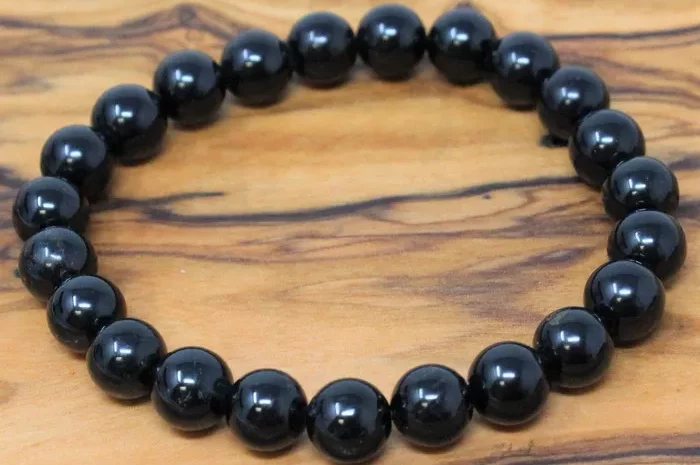Black tourmaline, also known as schorl, is a member of the tourmaline family of gemstones. Its dark, sleek appearance and protective qualities have made it a popular choice for jewelry and metaphysical purposes. However, many people have concerns about whether black tourmaline fades in sunlight. To address this question comprehensively, we will explore the chemical and physical properties of black tourmaline, the effects of sunlight on gemstones, and specific factors that influence fading in gemstones.
Chemical and Physical Properties of Black Tourmaline
Black tourmaline belongs to the boron silicate minerals, with a complex chemical composition primarily consisting of sodium, aluminum, boron, silicon, oxygen, and trace elements such as iron, magnesium, and lithium. Its crystal structure is unique, often forming elongated prismatic crystals with a vitreous to greasy luster.
Composition and Structure
- Silicate Framework: Black tourmaline’s framework is built upon a silicate tetrahedral structure, where silicon atoms are tetrahedrally coordinated with oxygen atoms.
- Boron and Aluminum: Boron atoms and aluminum atoms occupy specific sites within the crystal structure, contributing to its stability.
- Trace Elements: Iron and magnesium, often present in black tourmaline, give it its dark coloration.
Hardness and durability
Black tourmaline has a hardness ranging from 6.5 to 7.5 on the Mohs scale, making it relatively durable and scratch-resistant. Its durability is further enhanced by its resistance to chemical attack and thermal stability.
The effect of sunlight on gemstones
Sunlight is a complex mix of electromagnetic radiation, including visible light, ultraviolet (UV) radiation, and infrared (IR) radiation. Each type of radiation has different effects on gemstones.
visible light
Visible light primarily affects the color and appearance of gemstones. While it generally does not cause chemical changes in most gemstones, prolonged exposure can sometimes bleach out colors in certain materials, especially organic gemstones like amber and coral.
Ultraviolet radiation
UV radiation is more energetic than visible light and can cause chemical changes in gemstones. For example, UV radiation can darken some gemstones, such as jadeite, or cause fading in others, particularly those with organic dyes or treatments.
infrared radiation
IR radiation primarily causes heating of materials. While most gemstones can withstand moderate heating, prolonged exposure to intense IR radiation can lead to thermal stress and potential cracking.
Factors that affect the fading of gemstones
Whether a gemstone fades in sunlight depends on several factors, including its chemical composition, physical structure, and any treatments or enhancements it has undergone.
chemical composition
Gemstones with a stable chemical composition are less likely to fade. Black tourmaline’s boron silicate structure is relatively stable and resistant to chemical changes caused by sunlight.
Physical structure
The physical structure of a gemstone can also affect its resistance to fading. Gemstones with a dense, crystalline structure are more resistant to UV and IR radiation than those with a porous or amorphous structure. Black tourmaline’s crystalline structure contributes to its durability and resistance to fading.
Care and enhancement
Gemstones that have undergone treatments or enhancements, such as dyeing or heat treatment, are more susceptible to fading. These treatments can alter the gemstone’s chemical composition or physical structure, making it more vulnerable to sunlight.
Sunny tourmaline and black tourmaline
Given black tourmaline’s chemical and physical properties, it is relatively resistant to fading in sunlight. However, several considerations are still important.
Natural resistance
Black tourmaline’s stable boron silicate structure and dense crystalline arrangement make it inherently resistant to fading caused by UV and IR radiation. Unlike some organic gemstones or those with treatments, black tourmaline’s color is derived from its natural composition and structure, which is less prone to bleaching or fading.
Long-term Exposure
While black tourmaline is resistant to fading, prolonged exposure to intense sunlight can still cause subtle changes over time. For example, prolonged UV exposure can cause a slight darkening or color shift in some gemstones, including black tourmaline. However, these changes are generally minimal and not visually significant.
Heat Sensitivity
While black tourmaline is thermally stable, it can still experience thermal stress if exposed to extremely high temperatures for extended periods. This is particularly important for jewelry that is worn in direct sunlight for long durations, such as on a sunny beach or in a hot climate. To minimize this risk, it’s advisable to store black tourmaline jewelry in a cool, shaded place when not worn.
Practical Tips for Care and Maintenance
To ensure your black tourmaline jewelry retains its beauty and value, follow these practical tips for care and maintenance:
Avoid Prolonged Sunlight Exposure: While black tourmaline is resistant to fading, prolonged exposure to intense sunlight can still cause subtle changes. Limit exposure to direct sunlight, especially in hot climates.
Store in a Cool, Dry Place: When not wearing your black tourmaline jewelry, store it in a cool, dry place to minimize exposure to heat and humidity.
Regular Cleaning: Use a soft cloth and warm water to gently clean your black tourmaline jewelry. Avoid harsh chemicals or abrasive cleaners that could scratch or damage the gemstone.
Professional Inspection: Regularly take your black tourmaline jewelry to a professional jeweler for inspection and maintenance. They can check for any signs of wear or damage and provide professional cleaning and polishing services.
Conclusion
In summary, black tourmaline is relatively resistant to fading in sunlight due to its stable chemical composition and dense crystalline structure. While prolonged exposure to intense sunlight can cause subtle changes, these are generally minimal and not visually significant. By following practical tips for care and maintenance, you can ensure your black tourmaline jewelry retains its beauty and value for years to come. Understanding the properties and behaviors of gemstones is crucial for their preservation and enjoyment, making your jewelry collection a lifelong treasure.
Related topic:
- 6 Stunning Ways to Use Siberite Tourmaline in Decor
- What Does Black Tourmaline Do
- What Is Blue Tourmaline Good For


